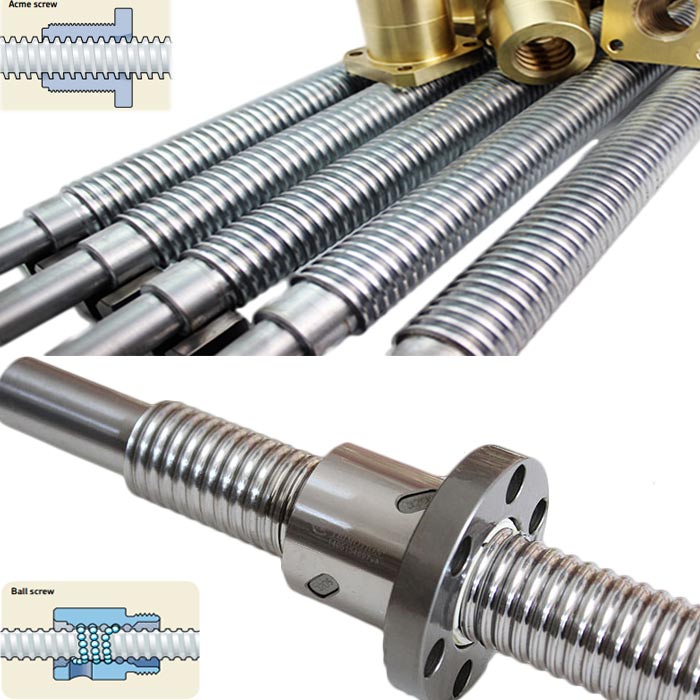Traditional types of lead screws include ball screw and acme screw, whose specification will be influenced by an actuator's configuration and load requirements.
Ball screw: All-steel ball screws consist of a screw shaft, ball nut with a ball recirculation system to convert rotary motion into smooth, accurate, and reversible linear motion (or torque to thrust). The row of circular rolling elements is self-contained in a closed system between the nut and screw for a design exhibiting extremely low friction coefficients. The low frictional resistance minimizes wear, improves efficiency, and reduces operating temperature for longer service life. Ball screws can handle extreme loads, achieve high duty cycles, operate over a wide temperature range, and deliver the precision necessary to equip actuators performing over long periods at high speeds and requiring high dynamic capability. Brakes usually will be specified for ball screw actuators to prevent back-drive.
Acme screw: These screws transmit torque into linear motion through direct sliding friction. A typical assembly consists of a steel screw and plastic nut. Some of the products are equipped with acme screws with a relatively high friction coefficient that makes them well suited for self-locking application. Acme screw actuators accommodate high static load, withstand excessive vibration, operate quietly, and represent cost-effective solutions.

Generally , there’re five differences between ball screws and acme screws :
1.Transmission efficiency
The transmission efficiency of the ball screw is about 90~96%, and the transmission efficiency of the acme screw is about 26~46%. If you drive the same large load, you can use a smaller screw drive with a ball screw.
2. Drive speed
The ball screw is rolling friction, and the acme screw is sliding friction. When the work is done, the temperature rise of the former is much lower than that of the latter, so in general, it can undertake the task of high-speed transmission.
3. Service life
The surface damage of rolling friction is much smaller than that of sliding friction, so the ball screw has a much higher maintenance life than the acme screw when the conditions such as cleaning and lubrication are met.
4. Self-locking function
The self-locking property of the screw is generally inversely proportional to the transmission efficiency. Therefore, the ball screw is almost no self-locking function, and the acme screw has self-locking property.
5.Economic
From the previous and current situation, the ball screw is still more expensive than the acme screw because its structure is more complicated than the acme screw. However, as the number of automation equipment increases and the output increases, the price difference becomes smaller and smaller.